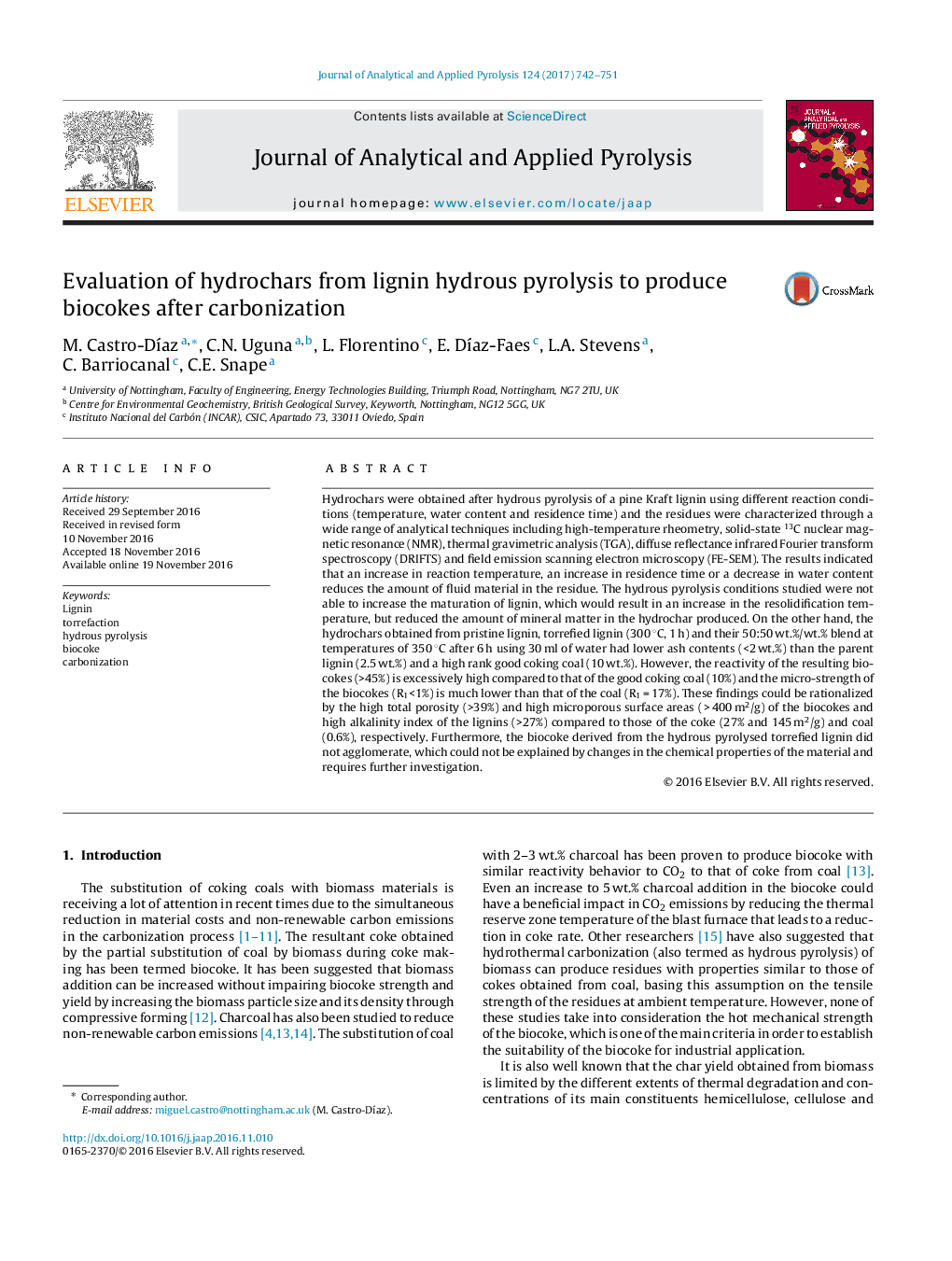| کد مقاله | کد نشریه | سال انتشار | مقاله انگلیسی | نسخه تمام متن |
|---|---|---|---|---|
| 5134648 | 1492953 | 2017 | 10 صفحه PDF | دانلود رایگان |

- Hydrous pyrolysis conditions can increase lignin fluidity but not its maturation.
- Lignin hydrous pyrolysis decreases its ash yield to lower levels than that in coal.
- Biocoke obtained from hydrous pyrolysed torrefied lignin (TL) does not agglomerate.
- Biocokes derived from lignin (L) or L/TL hydrochars are highly reactive and weak.
- The alkalinity and oxygen content of the hydrochars control biocoke porosity.
Hydrochars were obtained after hydrous pyrolysis of a pine Kraft lignin using different reaction conditions (temperature, water content and residence time) and the residues were characterized through a wide range of analytical techniques including high-temperature rheometry, solid-state 13C nuclear magnetic resonance (NMR), thermal gravimetric analysis (TGA), diffuse reflectance infrared Fourier transform spectroscopy (DRIFTS) and field emission scanning electron microscopy (FE-SEM). The results indicated that an increase in reaction temperature, an increase in residence time or a decrease in water content reduces the amount of fluid material in the residue. The hydrous pyrolysis conditions studied were not able to increase the maturation of lignin, which would result in an increase in the resolidification temperature, but reduced the amount of mineral matter in the hydrochar produced. On the other hand, the hydrochars obtained from pristine lignin, torrefied lignin (300 °C, 1 h) and their 50:50 wt.%/wt.% blend at temperatures of 350 °C after 6 h using 30 ml of water had lower ash contents (<2 wt.%) than the parent lignin (2.5 wt.%) and a high rank good coking coal (10 wt.%). However, the reactivity of the resulting biocokes (>45%) is excessively high compared to that of the good coking coal (10%) and the micro-strength of the biocokes (R1<1%) is much lower than that of the coal (R1 = 17%). These findings could be rationalized by the high total porosity (>39%) and high microporous surface areas ( > 400 m2/g) of the biocokes and high alkalinity index of the lignins (>27%) compared to those of the coke (27% and 145 m2/g) and coal (0.6%), respectively. Furthermore, the biocoke derived from the hydrous pyrolysed torrefied lignin did not agglomerate, which could not be explained by changes in the chemical properties of the material and requires further investigation.
Journal: Journal of Analytical and Applied Pyrolysis - Volume 124, March 2017, Pages 742-751